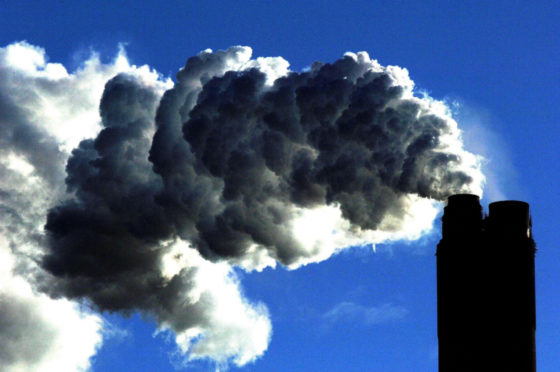
Global carbon emissions from energy are expected to fall by almost 8% in 2020 in the biggest drop in history as a result of the pandemic, experts said.
The International Energy Agency (IEA) predicts a year-on-year reduction of around 2.6 billion tonnes of carbon dioxide from energy use including electricity, transport and heating, bringing emissions to levels they were 10 years ago.
It would be more than six times the drop in emissions seen in 2009 as a result of the financial crisis, and almost twice as large as all previous declines since the end of the Second World War combined.
The fall is down to predicted declines in the fossil fuels, coal, gas and oil this year, in the wake of countries shutting down their economies and keeping people at home to fight the virus, and the impacts of subsequent recessions.
But the IEA warned that, like in other crises, the rebound in emissions after the pandemic could be larger than the decline unless investment in restarting the economy goes towards cleaner and more resilient energy supplies.
IEA executive director Dr Fatih Birol described the plunge in demand for nearly all major fuels as “staggering” and warned: “This is a historic shock to the entire energy world”.
And he said: “Resulting from premature deaths and economic trauma around the world, the historic decline in global emissions is absolutely nothing to cheer.
“And if the aftermath of the 2008 financial crisis is anything to go by, we are likely to soon see a sharp rebound in emissions as economic conditions improve.
“But governments can learn from that experience by putting clean energy technologies – renewables, efficiency, batteries, hydrogen and carbon capture – at the heart of their plans for economic recovery.
“Investing in those areas can create jobs, make economies more competitive and steer the world towards a more resilient and cleaner energy future,” he urged.
A new report from the IEA has found that in the first quarter of 2020, coal demand was down 8% on the same period in 2019 as economic activity was reduced and oil demand went down 5% in the face of huge falls in road transport and aviation.
Full lockdowns have pushed electricity demand down by 20% or more in some areas, while power consumption levels on weekdays have looked “like those of a pre-crisis Sunday”.
By April, almost all the world’s population was under some kind of containment measures and countries and regions which account for more than half of global primary energy use were in partial or total lockdown.
Using the data from the first 100 days of the year, the report estimates how energy consumption and carbon emissions are likely to evolve over 2020 as the world battles the pandemic and recovers from its economic fallout.
The report estimates energy demand will fall 6% in 2020, the equivalent of losing the entire demand of India, the world’s third largest energy user.
As a result coal demand is set to fall by 8% this year, natural gas is on track to decline 5% and a 9% fall in oil is also predicted.
The IEA said renewables are set to be the only energy source that will grow in 2020, with their share of global electricity generation projected to jump due to priority access to grids and low operating costs.
Having overtaken coal for the first time in 2019, low-carbon power sources including wind, solar, hydro and nuclear are set to extend their lead over the fossil fuel in 2020, to reach 40% of global electricity generation, the report said.

Enjoy the convenience of having The Sunday Post delivered as a digital ePaper straight to your smartphone, tablet or computer.
Subscribe for only £5.49 a month and enjoy all the benefits of the printed paper as a digital replica.
Subscribe